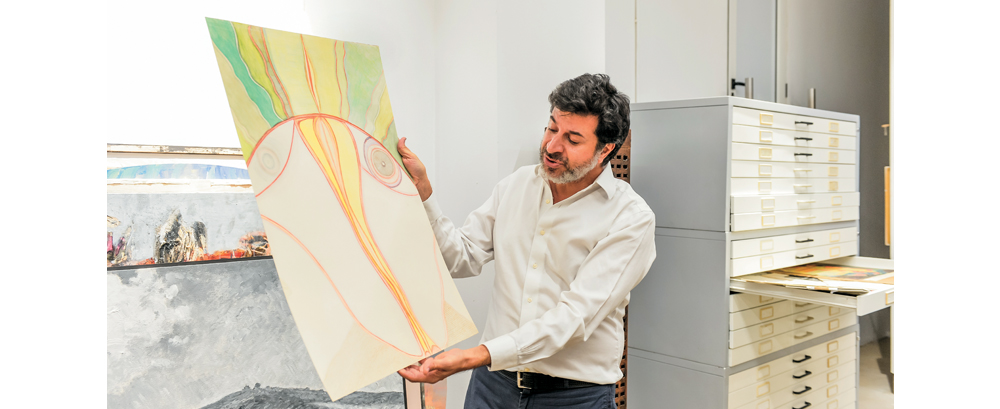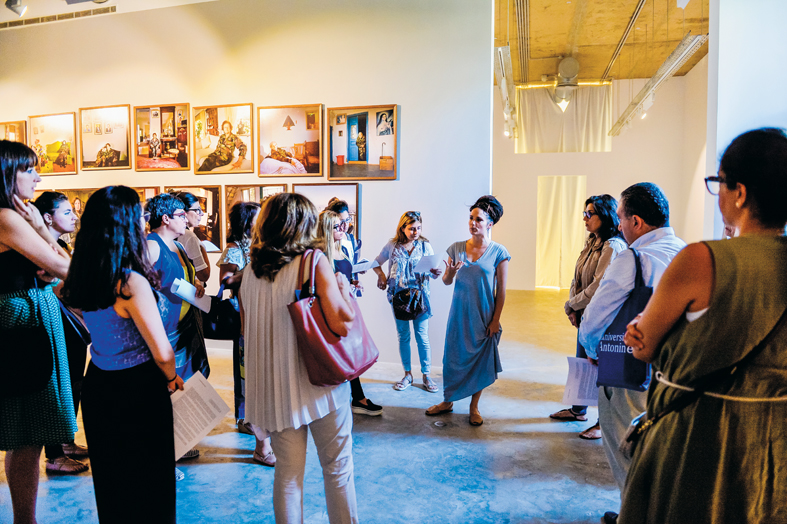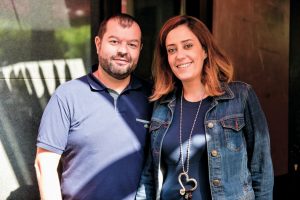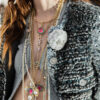Prestige issue 283, Feb. Mar. Ap. May 2017
Art & Culture by Najat Kassir
The center for permanent training of the Antonine University UA organized from October 6 2016 until the 8th, in collaboration with the Cercle Drouot Contemporain-Paris, a training entitled «Let’s talk about contemporary art!».This initiative was orchestrated by the director of the CFP, Dr. Jenny Mouchantaf and the Center’s art consultant, Sandy Saad, who came from Paris. For three days, the renowned speakers were able to give an overview of the main artistic movements, the new media adopted by the artists, the latest techniques and the organization of the current market. Christophe Delavault, founder of the Cercle Drouot Contemporain, a major specialist in the art market, photographer Serge Najjar and designer Hiba Kalache have each excelled in introducing us to this controversial world, misunderstood by the general public.

More and more, art is a sure value, a refuge, at a time of political and economic uncertainty, claiming its place at first rank. Classical art, in all its contexts, has assumed a preponderant role in different epochs and cultures. Collectors and amateurs could reconnect with a past with a dazzling artistic wealth. Between the two World Wars, artists emerged with talents sharpened by years of violence and destruction: a desire of another kind, to express themselves, to communicate with a public thirsty for aesthetics, joy of life and renewal. Hence the emergence of art, called contemporary. The years 1920-50 show a revival of an art attached to the reality, the daily life of the people. The individual holds an essential place: his desires and frustrations are expressed. The emergence of the schools of Freud and Carl Jung, their different interpretations of psychoanalysis have indirectly influenced contemporary art. Thanks to the presentation of Christophe Delavault, who acquired a very extensive experience of paintings, sculptures and photos, the public who attended the seminar was initiated in a short time to the following artists: Marcel Duchamp who uncovered the first contemporary work, «The urinal», named «Ready made». He was the first artist to transform a banal object of daily life into a work of art, putting his signature on it. The artist, his work, does not appear, as in classical works. In 1962, Andy Warhol surprised us again with his silkscreen, a series of the photos of Marilyn Monroe, or the electric chair that made its appearance in America. Warhol’s «Campbell soup» was transformed from an advertising object into a work of art. Scandalous and original, this intellectual approach gave value to the work. Jef Koons surprised the public in 1975 with his sculptural work, «Balloon dog», a monumental 3m by 3m60, a technical achievement whose price reached 58.4 million dollars, record never reached by an artist during his lifetime. The carpet covered with flowers, his last work, with ephemeral perpetuity. Beyond the objects borrowed from reality, emerge in the 1920s, photographs taken by artists-photographers, competing with painting and sculpture. Throughout Europe, these photographers represent the real daily life of people, the real: such as Martin Paar, a witness of his time, who recounts the English middle class daily with a lot of kitsch, with a nod to the reminiscences of ” A modern America. In 1963, David Lachapelle used classical iconography to represent Pompeian scenes. His photos appear on disc covers. He appropriates the white. In the 1950s Bern and Hilda Besher photographed the Industrial Daily, such as oil wells. Appearance of the pointillist photographer, Pikzel, inspiring Soto, Vazarelli later.

The photography engages with Kara Walker, (USA), which deals with slavery, sexual abuse, forming large facilities. The combination of sound and light makes its appearance. The “Draw to Perform” event in London is inspired by this combination.
As for the afternoon, participants had the chance to visit the exhibition «Resistance & Persistence» of the NGO Art In Motion, created by curator Rania Tabbara, in the presence of international artists who Explained in detail the creation and meaning of each work, at the René Mouawad Garden, Sanayeh. On the second day, the photographer-artist, Serge Najjar, Lebanese, recognized by his abstract style of the photo where he adds a touch of reality through small characters taken in the context of his photo. His lines are straight, structured, architectural. Beirut is his field of work … Initiator of the school of «pictorialism», Serge Najjar believes in the abstract. He seduces this small audience with his modern and elaborate presentation of an art more and more sophisticated, which he mastered so well. His presentation was followed by a visit to the Tanit Gallery, where Lamia Abillama is exhibiting, an installation called «Who tells the story of 51 Lebanese women passively witnessing a country disintegrating.» On the 3rd day, multi-faceted artist Hiba Kalache, who excelled in her presentation: painter, sculptor, goldsmith, her works are all inspired by her childhood memories. Her paintings, for the most part, were ephemeral, food being the origin. Usage of the pink color, in all its shades, from fuchsia to candy pink, reminiscences of childhood, nostalgia for childhood traumatized by the years of civil war in Lebanon.«Kiss me before you go», one of her installations, Hiba Kalache excelled there. Sufism is one of her other major themes, through which she transmits a message of love … The Young Arab Revolution, which began in Tunisia since 5 years finds its echoes in her recent works. Her presentation was closed with a visit to the Saleh Barakat Museum, where the painter Ayman Baalbaki is presently exhibiting his works inspired by the many wars in Lebanon and their destructive effects; «Blowback», title of his recent exhibition. Images of the Israeli invasion of the tarmac at Beirut Airport in 1968, followed by the destruction of several MEA aircrafts. As well as other paintings. A visit to the private collection of the great collector Saleh Barakat or works concealed from the public revealed a real cave of Ali Baba. We have had the privilege of seeing rare masterpieces worthy of the finest collections in the world by Lebanese artists renowned for their talents.


If art, in all its aspects, is a form of expression, a vector of messages, the so-called contemporary art of our committed age adapts itself to the sweet and bitter reality of everyday life. Lyricism, poetry, novel, cinema, painting and photography have always been committed to their societies and their conjunctures. Listening to them or seeing them, you feel what is going on. What would be the art of the twenty-first century, which, more than ever, must meet the demands of difficult times, in an uncertain time.








